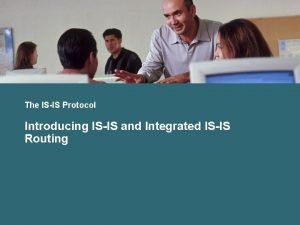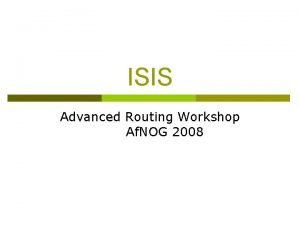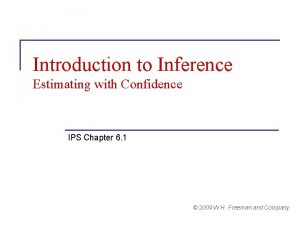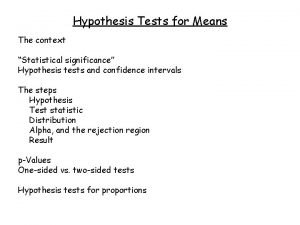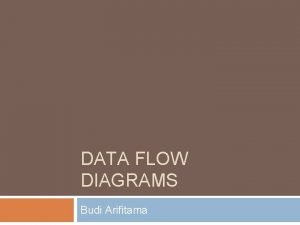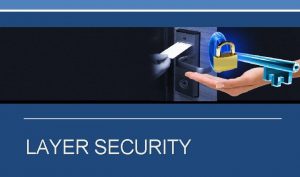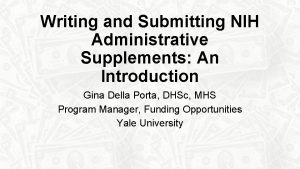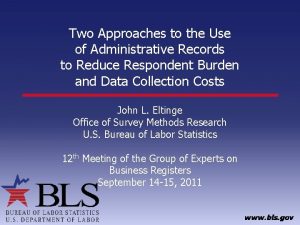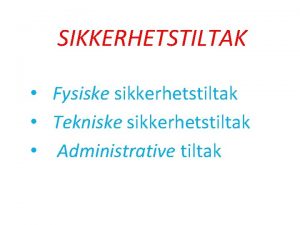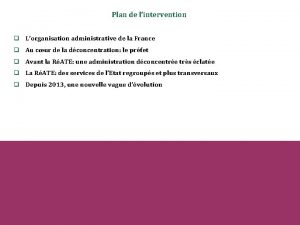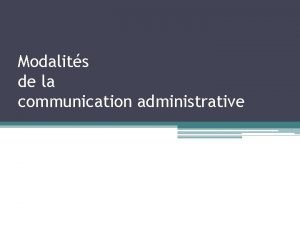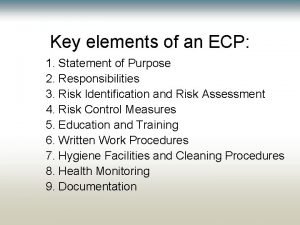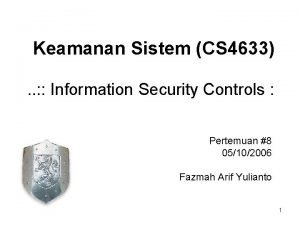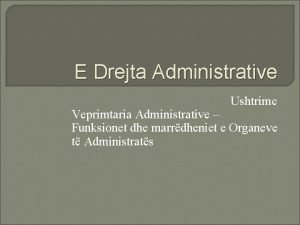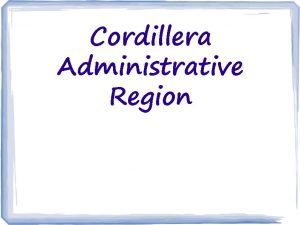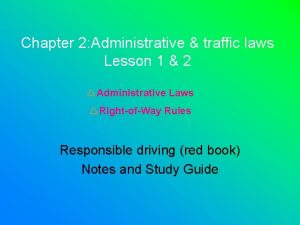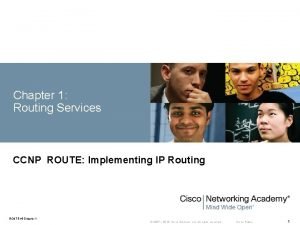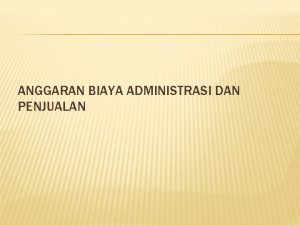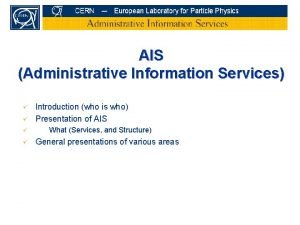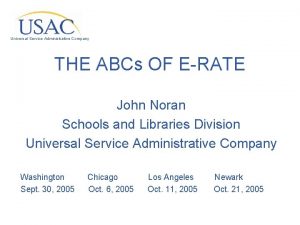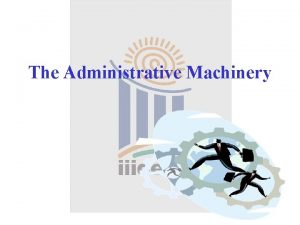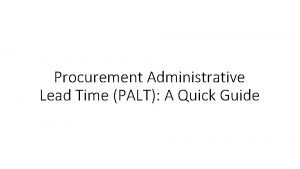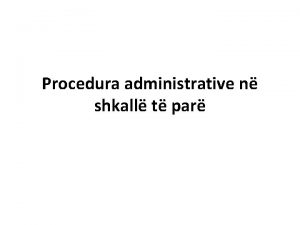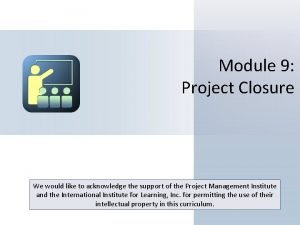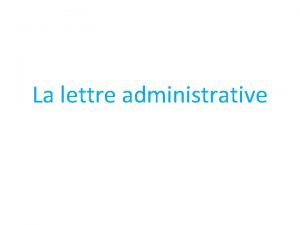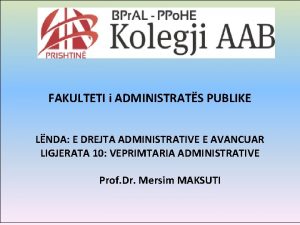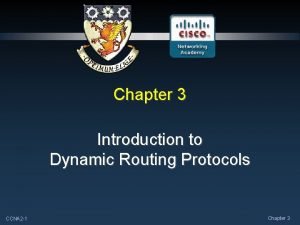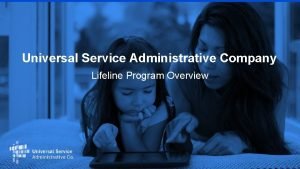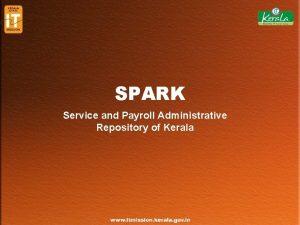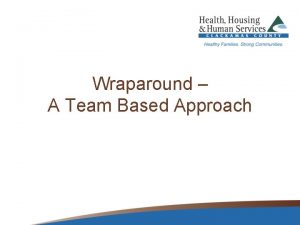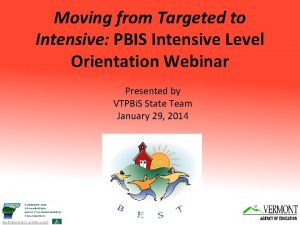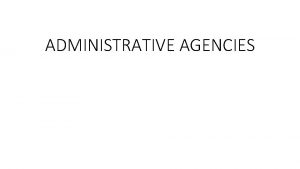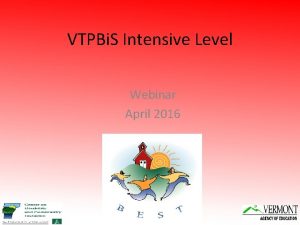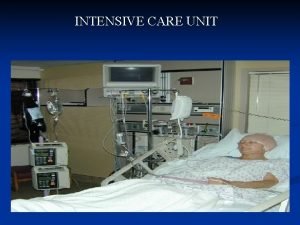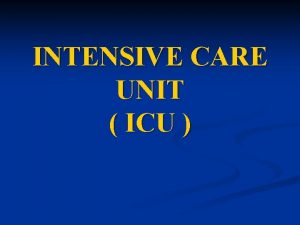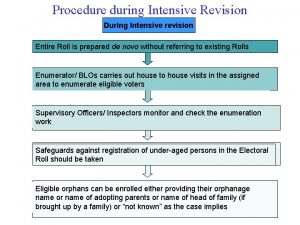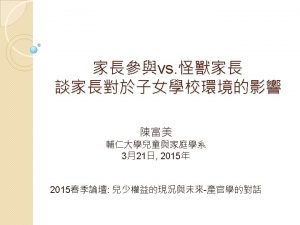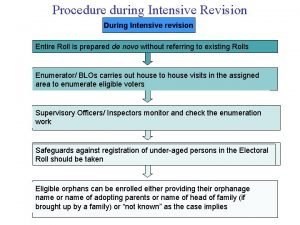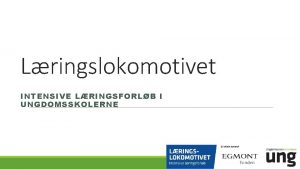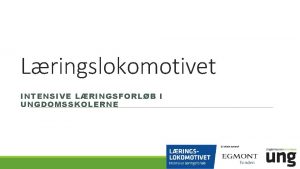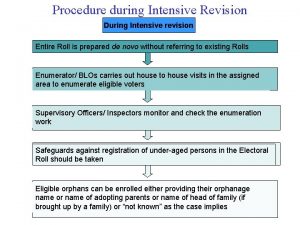1 INTENSIVE LEVEL WRAPAROUND Administrative Overview April 2013























































- Slides: 55

1 INTENSIVE LEVEL WRAPAROUND Administrative Overview April 2013

Congratulations & Welcome to Tier 3!

3 VTPBi. S Steps for Adopting Intensive Level Exploration Readiness SU Team Facilitator Training Complete BAT & Readiness Checklist Admin Overview Implementation & Coaching Training Data Systems Revise & Refine

4 Today’s Agenda and Learning Objectives 1. What is wraparound? Consider your experience Review Intensive Level Wrap 2. Explore readiness and implementation Examine systems Review practices Understand data Participate BEST SI & Follow-up support 3. Plan next steps Identify facilitators

BEST Expectations Be present Engage with others Support each other Team solutions

6 Training Materials: USB & Website USB Includes: 1. Power. Point 2. Planning Tools www. pbisvermont. org

7 Think about a student… What was positive or successful about her/his individualized supports?

8 1. WHAT IS WRAPAROUND?

9 What is wraparound? • Team-based process that engages students and families to lead their own teams • Teams create plans that meet unique needs & strengths of students with complex needs and their families • Teams meet regularly and as long as needed to achieve student & family goals.

10 Wraparound Principles - Activity Voice & choice Natural supports Team-based Collaboratio n Strengthsbased Communitybased Culturally Competent Individualize d Uncondition al Outcomesbased

11 Four Phases of Wraparound 1. Engagement & Team Preparation • Orient family, stabilize crises, assess strengths & needs, form vision, identify team members 2. Planning • Hold initial meeting(s), orient team, create plan focusing on “Big Needs”, identify services & supports 3. Implementation • Hold regular meeting, implement plan, review progress, revise plan 4. Transition • Define when vision / goals have been met, “unwrap” celebration, follow up with familiy

12 Wraparound IS NOT • Planning process used by • • • A team of people • Who come together • • Around family strengths/needs • To create a unique plan • of interventions & supports • Based upon a process of • unconditional care – no blame, no shame Set of services One or two time meeting Special education evaluation Just counselor meeting with family or student Only for families and students we judge as “workable” Flexible funds

13 Who benefits from wraparound? • Youth with needs in home, school, and community • Youth with needs in multiple domains • Families not engaged • Staff through coordination • Schools through climate change

14 How is wraparound similar and different from typical individualized service delivery in your school?

15 2. EXPLORE READINESS & IMPLEMENTATION Practice s Data Syste ms

16 Supporting Staff Behavior OUTCOMES Systems Supporting Decision Making Outcomes Practices Supporting Student Behavior

17 Lessons Learned • PBIS Intensive level interventions require system of support at both the school and SU/District. • New interventions (innovations) require changes in system structures. • Success at any level of the pyramid is dependent on fidelity of implementation at all levels of the pyramid. Mixed outcomes Sustainab le outcomes Alone Supporte d

19 Tier 3 SU/District Targeted/Intensive: • Secures resources • Focuses on student outcomes • Focuses on Fidelity of Implementation measures across the district/SU School Universal: • Plans and implements 6 school components of PBIS School Targeted/Intensive: • Creates procedures for referral, screening and evaluation • Communicates with staff and families Student SU/District Tier 2 School Tier 1 SU/District Universal: • Coordinates implementation • Ensures access to resources • Reviews data across Student Targeted: • Matches students to interventions • Evaluates & Monitors Student Progress Student Intensive: • Completes FBA/BIP • Provides intervention • Uses data • Facilitate

20 SU/District School Student

21 SU/District Leadership Team Responsibilities Systems Practices Data • Communicatio n • Resource allocation • Resource coordination • Personnel prep • Leadership • Data collection & review • Other • Continuum • Evidencebased • Matched to student & family needs • Home, school, & community • Family support • Outcomes • Needs / gaps • Fidelity monitoring • Progress monitoring • Implementatio n review

22 SU/District Wraparound Team Expectations • “Meet” 2 -4 times per year to: • Summarize student outcomes (overall, not individually) • Review progress of system to support Wraparound • Assess efficiency and effectiveness of school/community resources that support Wraparound • Identify systems and resource gaps • Other

23 The Dream Team PBIS Coordinator Special education Mental health Principals Wrap Facilitators Family Rep Regular education

27 Stages of Implementation of an “innovation” (PBIS Wraparound) occurs in stages Innovation Installation Initial Implementatio n Full Implementatio n Exploration 2 -4 years Fixsen, Naoom, Blase, Friedman, & Wallace, 2005 Sustainability

30 Activity: Complete Page 1 VTPBi. S Readiness Checklist

31 Activity: Complete page 2 of VTPBi. S Readiness Checklist.

32 Wraparound Hinges on the Facilitator • Has experience working with children with complex needs • Able to engage families • Collaborates with natural supports & professionals • Follows wraparound process & principles • Uses data

34 Targeted/Intensive Level Skill Sets • Understands the conflict cycle and uses de- escalation strategies (Life Space Crisis Intervention) • Develops FBAs and BIPs • Uses effective engagement strategies with students, families and teams • Develops targeted interventions function-based. • Familiar with academic modifications and accommodations • Integrates data-based decision-making into comprehensive processes (home-schoolcommunity)

35 Supporting Staff Behavior OUTCOMES Systems Data Practices Supporting Student Behavior Supporting Decision Making

36 SW-PBIS Supports for All Students Intensive Supports – Individualized interventions provided to students with most complex emotional and behavioral needs. Targeted Supports – Provided to students determined to be “at-risk” of emotional and behavioral challenges. Universal Supports – Supports provided to all students. Expectations are taught, reinforced, and monitored in all settings. Who doesn’t need Wraparound wraparound? Complex FBA/BIP 1 -5% Brief FBA/BIP Individualized CICO 5 -15% Social/Academic Instructional Groups Check-in/Check-out 80 -90% School & Class-wide expectations & supports

39 Tier 1: Benchmarks for Advanced Tiers BAT Item Rating 1. Tier 1/Universal intervention is in place as measured by scores on the SET, Bo. Q, TIC, or PIC. 2 Fully in place 2. Team members agree that SWPBIS is in place and is implemented consistently by teachers and staff. 2 Fully in place 3. A data system is in place for documenting office discipline referrals. 2 Fully in place

40 TIER 2 TARGETED INTERVENTIONS Descriptions and Examples…

41 Targeted Interventions Based on Functions of Behavior Access Adult Attention/Support: • Check-In/Check-Out • Adult Mentoring Programs Access Peer Attention/Support: • Social Skills Instruction • Peer Mentoring • Self-Monitoring with Peer Support (function: academic task escape) Academic Skills Support • Organization/Homework planning support • Homework completion club • Tutoring

42 Inventory of Existing Targeted Interventions Reminder: Perhaps complete or review at BEST SI during team time

43 Check-In/Check-Out (CICO) Default targeted intervention. WHY? • Most students receive multiple ODRs for peer or adult attention. • Evidence indicates CICO is effective practice for reducing acting out behavior related to attention seeking. Schools must have strong CICO in place!

45 ACTIVITY: TIER 1& 2 SUPPORTS BAT: 1 -3 Tier 1 BAT: 4 -6 Commitment BAT: 13 -17 Tier 2 Systems

46 REVIEW: IMPLEMENTATION & EVAL OF TIER 2 CICO BAT Questions 18 -31

47 INTENSIVE LEVEL INTERVENTIONS Descriptions and Examples…

49 FBA “BIG IDEAS” • FBA is a problem solving process – a way to think about behavior systematically. • FBA identifies the events that reliably predict and maintain problem behavior. Trigger Behavio r Consequen ce Function

50 TIER 3 ASSESSMENT & PLAN DEVELOPMENT BAT Questions 44 to 53 Don’t fill out, but review.

Choosing Appropriate Intensive Practice FBA/BIP Wraparoun d Brief FBA/BIP not successful Multiple needs Focus on 1 -2 behaviors Risk of placement change No wraparound criteria present Adults not engaged 51

52 Supporting Staff Behavior OUTCOMES Systems Supporting Decision Making Data/ Outcomes Practices Supporting Student Behavior

53 Why we collect data “Take time to remind each other of the progress and journey the team has been on with the student and family. . tell the story. ” - Addison Northeast SU

54 Types of Data • Individual students • Behavioral (ODRs, discipline, screening, assessment) • Academic (Grades, GPA, testing) • Strengths (connected to goals) • Needs (connected to goals) • Fidelity (specific to intervention strategies) • Systems Level Data Tools • Readiness Checklists (VTPBi. S Steps to Readiness) • Fidelity & Implementation (Benchmarks of Advanced Tiers) • Outcomes & Progress Monitoring

57 Consider Universal Screening Why Screen for Behavior? Kauffman (2001) • To find students whose problems are not immediately obvious (internalizers) and identify problems with a high degree of accuracy. • Early identification leads to early intervention • Schools that implement Universal Screening select interventions based on results of rating scales on the screening tools. This is effective and efficient.

58 ACTIVITY: TIER 2 & 3 STUDENT IDENTIFICATION BAT Questions 7 -12

59 Wraparound Specific Data Tools SD-T 2 • Student Disposition Tool 2. 0 HSC-T 2 • Home/School/Community Tool 2. 1 EI-T 2 • Education Information Tool 2. 0 WIT 2 • Wraparound Integrity Tool 2. 0 http: //www. pbisillinois. org Evaluation -> SIMEO II Tools

60 High strength Low need High need

61 Other Student Data

62 Systematic Information Management of Education Outcomes (SIMEO II) • On-line data collection system with graphing capability • VTPBi. S provides training to intensive level schools http: //www. pbisillinois. org/

63 Individual Student Intervention System (ISIS) • Add-on for SWIS • Individual student file format • Upload documents (e. g. , assessments, plans) • Define measures to monitor progress • Coordinated calendar of events, activities for plan https: //www. pbisapps. org

64 3. PLAN NEXT STEPS

66 VTPBi. S Steps for Adopting Intensive Level Exploration Readiness SU Team Facilitator Training Complete BAT & Readiness Checklist Admin Overview Implementation & Coaching Training Data Systems Revise & Refine

67 Next Steps What else? Identify facilitators for BEST SI strand Complete Readiness Checklist Complete BAT Schedule 24 SU/District team meetings

68 Wraparound Facilitator Training How to run wraparound teams including: • Engaging with families • Forming a team • Developing and implementing plan • Collecting and using data • Collaborating with school and community supports Who from your school(s) should be there?

69 Resources • Jesse Suter: 802 -656 -1130, jesse. suter@uvm. edu • Your State TA or Implementation Coach • Vermont PBIS: www. pbisvermont. org • Illinois PBIS: www. pbisillinois. org • New Hampshire PBIS: http: //www. nhcebis. seresc. net/pbis_nh • National Wraparound Initiative http: //www. nwi. pdx. edu
 Wraparound in nevada
Wraparound in nevada Wraparound milwaukee
Wraparound milwaukee 91524 answers 2021
91524 answers 2021 Molecular level vs cellular level
Molecular level vs cellular level Isis level 1 vs level 2
Isis level 1 vs level 2 Confidence level and significance level
Confidence level and significance level Isis level 1 vs level 2
Isis level 1 vs level 2 Confidence level and significance level
Confidence level and significance level Confidence level and significance level
Confidence level and significance level Level 0 dfd diagram
Level 0 dfd diagram Piramida level keamanan informasi memiliki berapa level
Piramida level keamanan informasi memiliki berapa level Costa levels of questions
Costa levels of questions Thread level parallelism in computer architecture
Thread level parallelism in computer architecture Rcp hlsl
Rcp hlsl Night pfp
Night pfp Administrative supplement nih
Administrative supplement nih Example of administrative records
Example of administrative records Administrative stuff
Administrative stuff The british administrative structure in india(1765-1857)
The british administrative structure in india(1765-1857) Indian government structure ppt
Indian government structure ppt Tekniske sikkerhetstiltak
Tekniske sikkerhetstiltak Raison administrative
Raison administrative What are the 6 generic administrative functions
What are the 6 generic administrative functions Organisation administrative de la france
Organisation administrative de la france Administrative report writing
Administrative report writing Les règles de la communication administrative
Les règles de la communication administrative Ecp-1
Ecp-1 Physical technical and administrative controls
Physical technical and administrative controls Administrative law
Administrative law Henri fayol scientific management
Henri fayol scientific management Veprimtaria administrative
Veprimtaria administrative Administrative officer dwp
Administrative officer dwp Geographical location of hudhud
Geographical location of hudhud Administrative information system in healthcare
Administrative information system in healthcare Office equipment
Office equipment Administrative vs traffic laws
Administrative vs traffic laws Administrative vs traffic laws
Administrative vs traffic laws Bgp administrative distance
Bgp administrative distance Cap administrative certification
Cap administrative certification Anggaran beban penjualan dan administrasi
Anggaran beban penjualan dan administrasi Administrative information systems ais
Administrative information systems ais Erate universal services
Erate universal services Administrative machinery
Administrative machinery Management science theory
Management science theory Administrative records with educational value
Administrative records with educational value Procurement action lead time
Procurement action lead time Barra e proves
Barra e proves Administrative closure in project management
Administrative closure in project management Lettre administrative
Lettre administrative E drejta administrative syllabus
E drejta administrative syllabus Routing protocols administrative distance
Routing protocols administrative distance Théorie de fayol
Théorie de fayol Universal service administrative company lifeline
Universal service administrative company lifeline Nirguna
Nirguna Spark service and payroll repository for kerala
Spark service and payroll repository for kerala Management is inborn and acquired ability
Management is inborn and acquired ability




